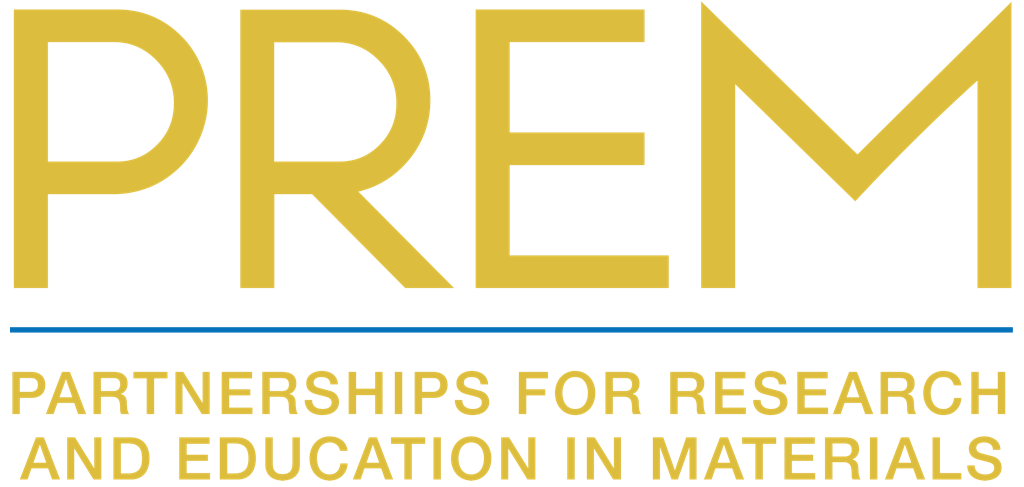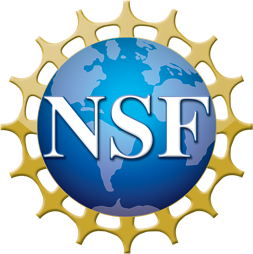California State University Northridge – Princeton University MRSEC PREM: Multidisciplinary Research and Education in Computational Materials Science
The objective of the PREM program is to expand and strengthen the research and educational activities of the multidisciplinary W. M. Keck Computational Materials Theory Center (CMTC) at California State University Northridge (CSUN), a Hispanic-serving institution, by forming a formal and long-term collaborative relationship with the Princeton Center for Complex Materials (PCCM). The goals of the PREM program are to: (1) foster multidisciplinary and innovative research in computational materials science; (2) educate and train students in cutting-edge computational materials science; (3) stimulate and develop strong university-industry-national laboratory partnerships; and (4) increase recruitment, retention, and degree attainment of minority students. The research activities focus in developing physical models and robust simulation techniques to study: 1) mechanical properties of metallic systems; 2) charge and spin transport in various low-dimensional electron systems; and 3) spin transport in magnetic tunneling junctions. Key features of the modeling efforts include studies of the effects: of chemistry on mechanical properties in metals and intermetallics which are potential candidates for structural applications at elevated temperatures; of spin-orbit coupling and disorder on the charge and spin transport properties of two-dimensional strongly correlated electron systems pertinent to spintronic devices, and; of disorder and quantum-well states on the spin torque in single and double magnetic tunnel barriers relevant to spintronic applications. The common theme of these developments involves linking multiple scales (spatial and temporal) and physics that have been traditionally studied in separated disciplines.  The PREM program promotes accessibility of frontier research/education experience in multidisciplinary computational materials science to students from underrepresented groups. We have been developing a sequence of courses for seniors and graduate students that cover materials simulation methods and underlying physics ranging from quantum many-body techniques, ab initio electronic structure, molecular dynamics, kinetic Monte Carlo simulations, and to continuum finite element materials modeling. Through their involvement in cutting-edge research activities, students are exposed to many materials-related physics and computational techniques, and gain skills in scientific programming on parallel computers, numerical analysis and graphic visualizations. Undergraduates are participating in the REU summer program hosted by PCCM, and are supervised by the Princeton faculty members and/or their Ph. D students to carry out joint research projects. The CMTC has started a Distinguished Lecture Series in which faculty members from Princeton and from other Universities/National Laboratories give public lectures on their cutting-edge research in materials science and engineering. The lecture series, disseminated via web-broadcasting and video streaming, has provided rare opportunities to the faculty and students at CSUN to learn the frontiers of materials research and share the excitement of modern materials research. The establishment of the PREM has significantly advanced the quality of research and education at CSUN to achieve national competitiveness and to promote accessibility of underrepresented students to frontier materials research. The PREM has allowed the access and harness of the intellectual power existing in the two participating institutions. The synergistic collaborations will allow the development of a number of powerful and unique computational approaches/codes that can address the grand challenge problems in materials science and engineering.
The PREM program promotes accessibility of frontier research/education experience in multidisciplinary computational materials science to students from underrepresented groups. We have been developing a sequence of courses for seniors and graduate students that cover materials simulation methods and underlying physics ranging from quantum many-body techniques, ab initio electronic structure, molecular dynamics, kinetic Monte Carlo simulations, and to continuum finite element materials modeling. Through their involvement in cutting-edge research activities, students are exposed to many materials-related physics and computational techniques, and gain skills in scientific programming on parallel computers, numerical analysis and graphic visualizations. Undergraduates are participating in the REU summer program hosted by PCCM, and are supervised by the Princeton faculty members and/or their Ph. D students to carry out joint research projects. The CMTC has started a Distinguished Lecture Series in which faculty members from Princeton and from other Universities/National Laboratories give public lectures on their cutting-edge research in materials science and engineering. The lecture series, disseminated via web-broadcasting and video streaming, has provided rare opportunities to the faculty and students at CSUN to learn the frontiers of materials research and share the excitement of modern materials research. The establishment of the PREM has significantly advanced the quality of research and education at CSUN to achieve national competitiveness and to promote accessibility of underrepresented students to frontier materials research. The PREM has allowed the access and harness of the intellectual power existing in the two participating institutions. The synergistic collaborations will allow the development of a number of powerful and unique computational approaches/codes that can address the grand challenge problems in materials science and engineering.  The research projects have direct applications to nanotechnology. The computational efforts may guide the development of novel materials and devices for aerospace engineering, spintronics and nano-applications. The PREM has allowed us: 1) to expand and strengthen the existing curriculum in materials science at CSUN ; 2) to incorporate an outreach education program for high school students and teachers in materials research; 3) to develop novel techniques for multiscale and multiphysics modeling to study more complex physical phenomena; and 4) to elevate and advance our research and education scopes to a new height. The CMTC has hosted a High School Teacher Materials Camp to make high school teachers aware of the role that computational materials science plays in our daily life and in the development of novel materials. Participants have been provided with instructional materials, which can be disseminated in their classrooms. The CMTC is currently organizing summer workshops to provide participants with hands-on experience in computational materials research, with the emphasis placed on underrepresented undergraduate and graduate students. The CMTC has also established a consortium of industry/national laboratories partners to sponsor students. The CMTC fosters multidisciplinary education and research in cutting-edge computational materials science and enhances recruitment, retention, and degree attainment of minority students. Selected Publications 1.X. Zhang and G. Lu, Quantum mechanics/molecular mechanics methodology for metals based on orbital-free density functional theory, Phys. Rev. B 76, 245111 (2007). 2.Z. Chen, G. Lu, N. Kioussis, and N. Ghoniem, Effect of local environment on the mobility of dislocations in refractory bcc metals: Concurrent multiscale approach, Phys. Rev. B 78, 134102 (2008). 3.X. Zhang, C.Y. Wang and G. Lu, Electronic structure analysis of self-consistent embedding theory for quantum/molecular mechanics simulations, Phys. Rev. B 78, 235119 (2008). 4.G. Wu, G. Lu, C.J. Garcia-Cervera, and W. E, Density-gradient-corrected embedded atom method, Phys. Rev. B 79, 035124 (2009). 5.I. Theodonis, A. Kalitsov and N. Kioussis, Spin transfer Torque in Double barrier Magnetic Tunnel Junctions, J. Magn. Magn. Mater. 310, 2043 (2007). 6. Ioannis Theodonis, Alan Kalitsov, and Nicholas Kioussis, Enhancing spin-transfer torque through the proximity of quantum well states, Phys. Rev. B 76, 224406 (2007). 7.L Sheng, D. N. Sheng, and F.D. M. Haldane, and L. Balents, Odd Integer Quantum Hall Effect (IQHE) for graphene: Interaction and Disorder Effect, Phys. Rev. Lett 99, 196802 (2007). 8.H. C. Jiang, Z. Y. Weng, and D. N. Sheng, DMRG Numerical Study of the Kagome Antiferromagnet, Phys. Rev. Lett 101, 117203 (2008). 9.Hao Wang, D. N. Sheng, L. Sheng, and F.D. M. Haldane, Broken-Symmetry States of Dirac Fermions in Graphene with A Partially Filled High Landau Level, Phys. Rev. Lett 100, 116802 (2008).
The research projects have direct applications to nanotechnology. The computational efforts may guide the development of novel materials and devices for aerospace engineering, spintronics and nano-applications. The PREM has allowed us: 1) to expand and strengthen the existing curriculum in materials science at CSUN ; 2) to incorporate an outreach education program for high school students and teachers in materials research; 3) to develop novel techniques for multiscale and multiphysics modeling to study more complex physical phenomena; and 4) to elevate and advance our research and education scopes to a new height. The CMTC has hosted a High School Teacher Materials Camp to make high school teachers aware of the role that computational materials science plays in our daily life and in the development of novel materials. Participants have been provided with instructional materials, which can be disseminated in their classrooms. The CMTC is currently organizing summer workshops to provide participants with hands-on experience in computational materials research, with the emphasis placed on underrepresented undergraduate and graduate students. The CMTC has also established a consortium of industry/national laboratories partners to sponsor students. The CMTC fosters multidisciplinary education and research in cutting-edge computational materials science and enhances recruitment, retention, and degree attainment of minority students. Selected Publications 1.X. Zhang and G. Lu, Quantum mechanics/molecular mechanics methodology for metals based on orbital-free density functional theory, Phys. Rev. B 76, 245111 (2007). 2.Z. Chen, G. Lu, N. Kioussis, and N. Ghoniem, Effect of local environment on the mobility of dislocations in refractory bcc metals: Concurrent multiscale approach, Phys. Rev. B 78, 134102 (2008). 3.X. Zhang, C.Y. Wang and G. Lu, Electronic structure analysis of self-consistent embedding theory for quantum/molecular mechanics simulations, Phys. Rev. B 78, 235119 (2008). 4.G. Wu, G. Lu, C.J. Garcia-Cervera, and W. E, Density-gradient-corrected embedded atom method, Phys. Rev. B 79, 035124 (2009). 5.I. Theodonis, A. Kalitsov and N. Kioussis, Spin transfer Torque in Double barrier Magnetic Tunnel Junctions, J. Magn. Magn. Mater. 310, 2043 (2007). 6. Ioannis Theodonis, Alan Kalitsov, and Nicholas Kioussis, Enhancing spin-transfer torque through the proximity of quantum well states, Phys. Rev. B 76, 224406 (2007). 7.L Sheng, D. N. Sheng, and F.D. M. Haldane, and L. Balents, Odd Integer Quantum Hall Effect (IQHE) for graphene: Interaction and Disorder Effect, Phys. Rev. Lett 99, 196802 (2007). 8.H. C. Jiang, Z. Y. Weng, and D. N. Sheng, DMRG Numerical Study of the Kagome Antiferromagnet, Phys. Rev. Lett 101, 117203 (2008). 9.Hao Wang, D. N. Sheng, L. Sheng, and F.D. M. Haldane, Broken-Symmetry States of Dirac Fermions in Graphene with A Partially Filled High Landau Level, Phys. Rev. Lett 100, 116802 (2008).


